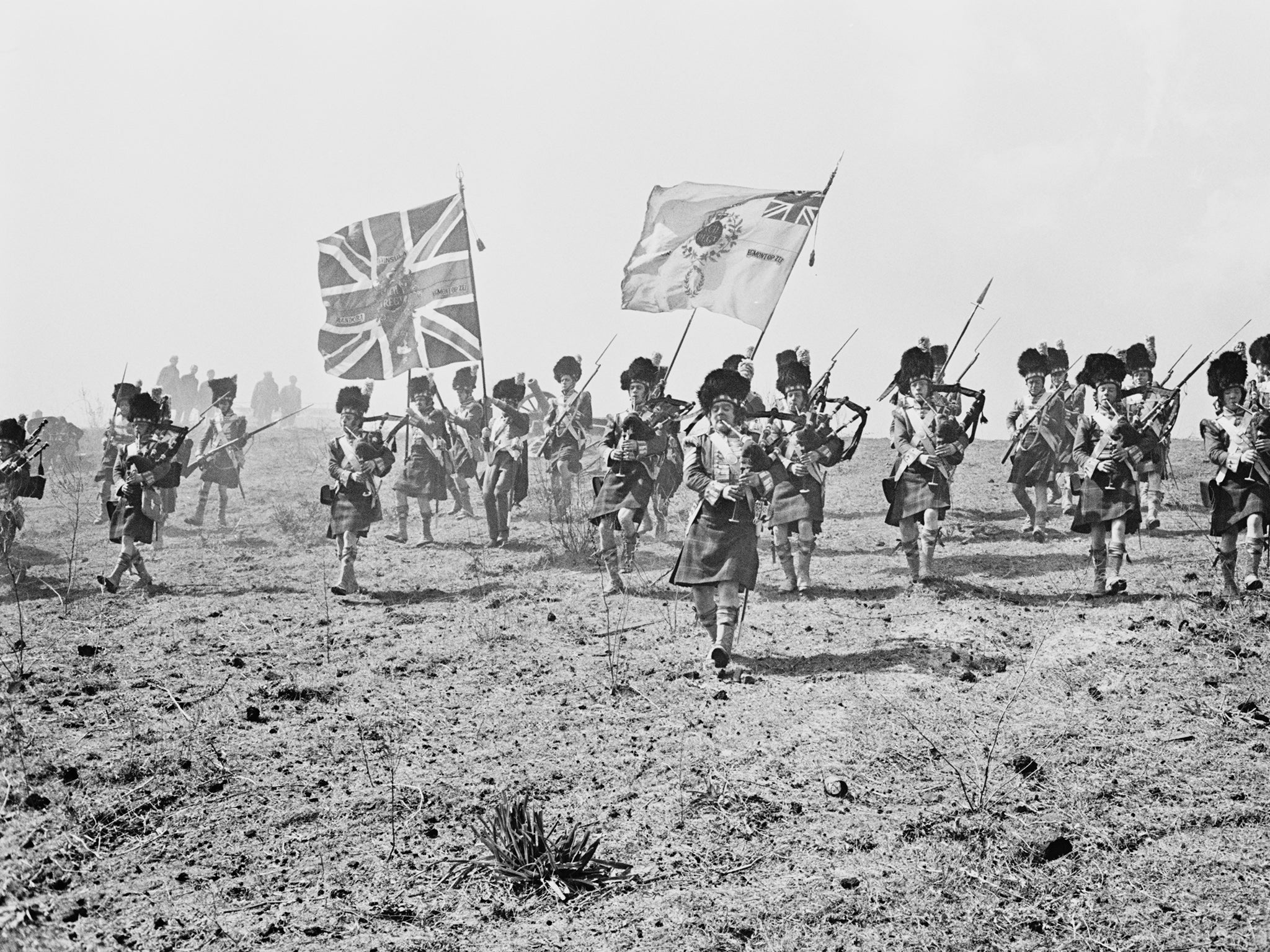Is flying a St George's flag an act of patriotism or a symbol of all that is bad about England?
There aren’t as many flags flying this summer. Perhaps people are fed up with being distracted. Perhaps they’re fed up with being tarred with the same brush as all those proper racist, right-wing fanatics who’ve coopted the British flag for their own ends

Your support helps us to tell the story
From reproductive rights to climate change to Big Tech, The Independent is on the ground when the story is developing. Whether it's investigating the financials of Elon Musk's pro-Trump PAC or producing our latest documentary, 'The A Word', which shines a light on the American women fighting for reproductive rights, we know how important it is to parse out the facts from the messaging.
At such a critical moment in US history, we need reporters on the ground. Your donation allows us to keep sending journalists to speak to both sides of the story.
The Independent is trusted by Americans across the entire political spectrum. And unlike many other quality news outlets, we choose not to lock Americans out of our reporting and analysis with paywalls. We believe quality journalism should be available to everyone, paid for by those who can afford it.
Your support makes all the difference.If you’re of a flag-waving bent, you’ll be enjoying an almost unparalleled summer right now. From the wedding of Prince Harry and Meghan Markle, through the Queen’s official birthday, to the World Cup, which segues nicely into the annual patriorgasm of The Proms, 2018 is the year for you.
But… where are you? As the globe’s finest football tournament gets underway in Russia, there is a definite dearth of flags draped from bedroom windows, flying from car roofs, clattering against poles erected in gardens. Whither John Bull, Britannia, and Captain Britain?
We in Britain have a curious relationship with the Union Jack, and in England an even more uneasy affair with the cross of St George. We often opine that other countries have a far more relaxed approach to waving their national flag, and wonder why we can’t be the same here.
It’s a vexing question, or perhaps more a question of vexillology (the study of flags, don’t you know). But the simple answer is that being overly fond of the English or British flags these days marks you out as a certain type of person.
You fly the flag, you’re a close-our-borders, take-back-control, I’m-not-racist-but Brexiteer who brushes away a tear at the first strains of the national anthem. You fly the flag and you’re a gammon-faced Middle Englander one heart-pump away from a coronary as you spit bile from the fourth row of the Question Time audience. You fly the flag, you’re a bulldog-tattooed, shaven headed, there’s-no-black-in-the-Union-Jack sports casual yomping around London fuelled by cheap lager and steak bakes, demanding the release of the English Defence League’s jailed founder Tommy Robinson.
The Union Jack and the St George cross have been tainted by association with the far right. Nobody seems surprised any more to see some bull-headed idiot draped in the flag and performing a Nazi salute. Which is a quite remarkable state of affairs.
We’ll recall, of course, that back when the Nazi salute was even more popular than it was now, the red, white and blue of the Union Flag (it’s often said that the flag should only be called the Union Jack when flown from a royal navy ship, though this is apparently a relatively recent cause for debate) was the symbol under which the free world rallied. This flag kills Nazis, we said, back in the 1940s. Even Dad’s Army in the 1970s had in its opening credits the Union Jack pointedly and relentlessly pushing swastikas back into the depths of Europe.

These colours don’t run, people used to say. Back in the Second World War, they didn’t, but that’s not what they meant when they said it. They meant that anyone wearing the English flag on foreign soil, for the purposes of supporting the national football team, would not be backing down from a fight with fans of other nations.
English football fans abroad earned such a foul reputation that ahead of the World Cup, England’s head of football policing, Mark Roberts, urged fans to leave the flags at home, warning they could “come across as imperialistic and cause antagonism”.
It may not surprise you to learn that there is a Flag Institute in the UK, which describes itself as the country’s national flag charity and which has members “in all six continents” (not quite sure how that works). They have produced a guide entitled Flying Flags in the United Kingdom (which is downloadable free from their site at flaginstitute.org) and they want the British flag to be a symbol of unity not division.
In the guide’s introduction, written by Flag Institute president Malcolm Farrow and co-signed by MP Andrew Rosindell, chair of the Flags and Heraldry committee, it says: “For too long our flag has been taken for granted and largely ignored.
“Few children are taught about it in school, few people know its history or even the correct way to fly it. It is time that this changed and we became familiar with our flag, because all of us have the right to fly the flag and may use it on land wherever and whenever we wish. It is the people’s flag as well as the state flag.”
But… is it, though, really? The origins of flags lie in military roots. Roman troops used to have a standard bearer carrying, say, the eagle of the Ninth Legion to let you know that trouble was on its way. In the Middle Ages pennants bearing heraldic designs were held aloft in battle so observers could see that Sir Roger de Courcey of Nookiebear Hall was getting well stuck in
. And by the turn of the 17th century, the forerunner of the Union Jack was created by royal decree so that both English and Scottish ships could fly the same banner and be easily identifiable at sea.
Flags have without question proved vital during times of war and strife. Look, here we come to kick your arse. Oh dear, we’re getting our arses kicked, send help. That ship’s not flying our flag, let’s go and kick its arse.
Had Britain not planted its flag in large amounts of the world during the days of empire, perhaps the Union Jack might not have the imperialist, unwelcome connotations it has across the world. Imagine, if you will, the Second World War having gone in a different direction. Imagine the Nazis had won. Then consider how people would have felt, 20 years later, when the German team came over to Britain for the 1966 World Cup, their fans draped in swastika flags.
Flying the British or English flags on home turf is necessarily an act of nationalism. What else can it be? Patriotism? Isn’t that just the same thing? If you fly the Union Jack from a flagpole in your garden, what’s the purpose? To tell your neighbours that you’re English? They probably know that. They live next door. They are, too.
However, to voice criticism of flag-flying is to invite a host of problems to your door. Ask Huw Thomas, who was standing in the Welsh ward of Ceredigion for Labour in the 2015 General Election, and who wrote a blog (almost 10 years earlier) saying the number of England flags he saw flying in Wales “sickened” him and were the signs of a “simpleton or casual racist”.

Ask Emily Thornberry, the Labour MP who resigned as shadow attorney general in 2014 after being attacked for posting to social media a picture of a house in Rochester draped with three England flags. Her tweet was deemed to be snobby and disrespectful, especially to the working class that Labour was desperately trying to court back to the fold.
And class must raise its head in this debate. Where are you most likely to see flags being flown? On the council estates, in the working-class enclaves. Not so much in Ilkley and Mayfair, perhaps. Save for the almost cartoonish pomp of the Proms, grassroots patriotism is seen as a salt of the earth sort of thing. Why, is another matter. Maybe it’s a classic authoritarian bread and circuses sort of thing; as a government, if you can keep the masses distracted with flag-waving fervour, they’re not going to spend as much time worrying that you’re stripping the NHS down to the bone, scrapping all their benefits and mothballing the places where they work.
Maybe that’s why there aren’t as many flags flying as normal this summer. Perhaps people are fed up with being distracted. Perhaps they’re fed up with being tarred with the same brush as all those proper racist, right-wing fanatics who’ve coopted the British flag for their own ends.
Still, we must remember that there was a brief period in recent history when the Union Jack seemed to shed its negative connotations. It was the 1990s, of course, those middle years of the decade when Britpop held sway, when football was coming home for Euro 96. Three Lions on a Shirt. Spice Girl Geri Halliwell’s Union Jack dress. New Labour and Things Can Only Get Better. Vanity Fair‘s “London Swings Again” cover featuring Liam Gallagher and Patsy Kensit in a red, white and blue John and Yoko-style bed-in.
But by the turn of the millennium, the north of England was inflamed by race riots, Nick Griffin was leading the British National Party to unprecedented success, and then the shocking events of 11 September 2001 occurred, and when the dust settled the Union Jack was not something with which to proclaim the coolness of Britannia, but a thing to shelter under, to draw in beneath, to mark out us from them.
There will always be people for whom the British flag is a symbol of the greatness of this country and that to not display it with pride suggests a failing of patriotism that is unforgivable.
There will always be those who think that the red of England on the St George flag and the Union Jack makes for a blood-stained cloth too ingrained by history to ever be a positive thing, and that flying either standard makes you complicit in everything that has ever been bad about England and Britain.
Will either side convince the other, or will we remain – as far as the flag is concerned – a disunited kingdom? Can we ever return to the days of the 1990s when Britain was out, loud and proud?
Perhaps this year, with its much-rumoured reunion of The Spice Girls, is when we finally find out.
Join our commenting forum
Join thought-provoking conversations, follow other Independent readers and see their replies
Comments